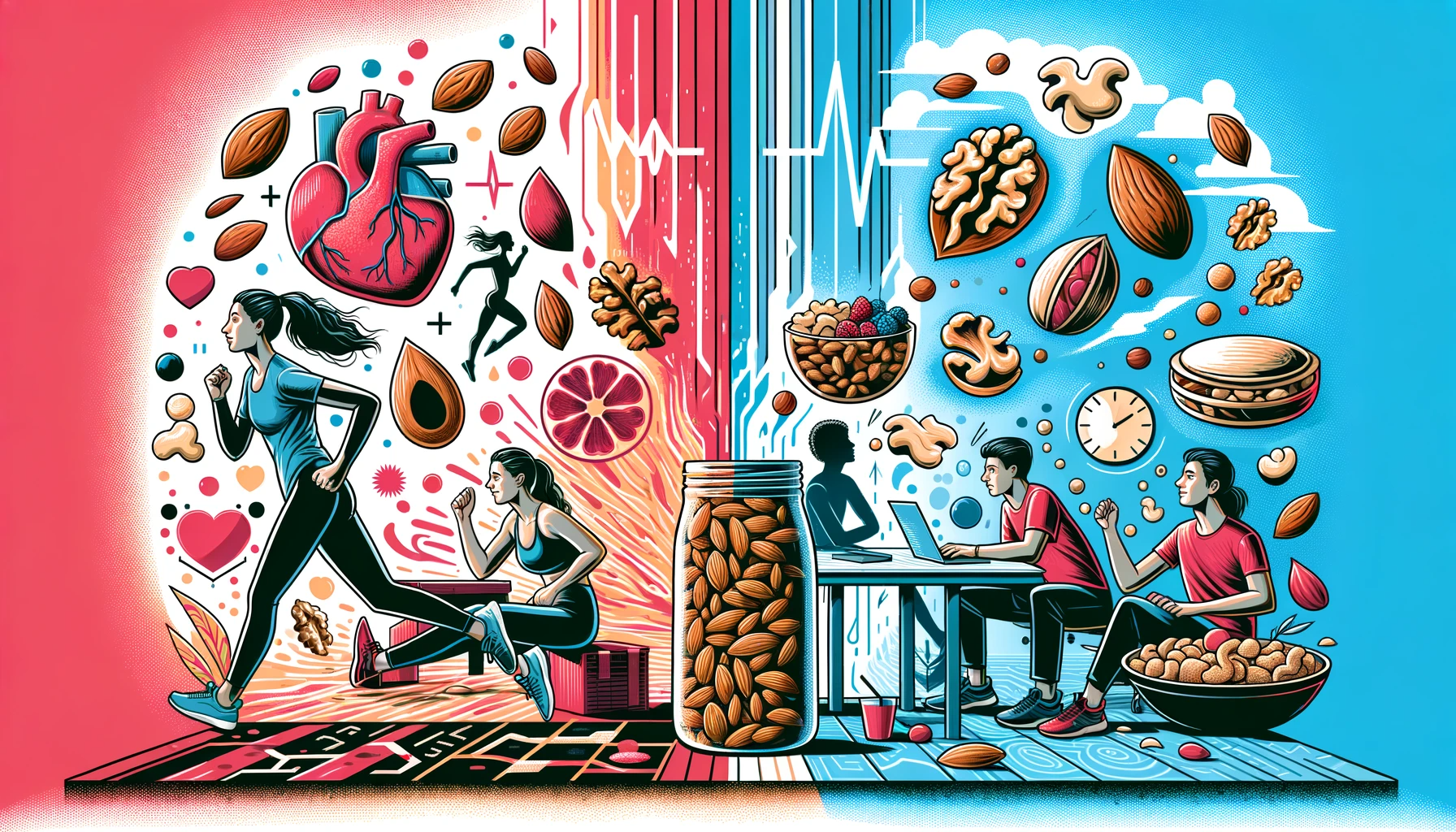In a recent study published in the journal Nutrients, researchers conducted a randomized diet intervention trial to evaluate the health impacts of substituting typical carbohydrate snacks with tree nuts. The intervention was conducted on young adults for a period of 16 weeks. Analysis of covariance (ANOVA) and multivariable modeling revealed that tree nuts might improve metabolic health, reducing waist circumference and lipid biomarkers in females and insulin sensitivity in men. Notably, no other calorie restrictions nor dietary changes were required to achieve observed improvements. Given that tree nuts are a relatively inexpensive and easy-to-access snack source, these findings may prompt a trend shift in young adults away from highly processed conventional snacks towards healthier natural alternatives.
Study: Consumption of Tree Nuts as Snacks Reduces Metabolic Syndrome Risk in Young Adults: A Randomized Trial
The burden of Metabolic Syndrome
Metabolic syndrome (MetSx) is the umbrella term for a group of severe chronic health conditions, each of which is independently linked to an increased risk of type 2 diabetes (T2D) and cardiovascular disease (CVD). The American Heart Association (AHA) has identified five main risk factors – blood glucose, high-density lipoprotein (HDL) cholesterol, triglycerides, waist circumference, and blood pressure (BP). Recent studies have found that diagnosis for three or more of these factors significantly increases T2D and CVD risk.
Encouragingly, research has also suggested that MetSx is highly susceptible to changing (modifiable) behaviors, especially diet, exercise, and sleep. Unfortunately, despite increased awareness of the benefits of healthy food, adequate sleep, and physical activity, MetSx prevalence has increased amongst American youth by more than 21% over the past 5-10 years. Anecdotal evidence has linked this undesirable trend to increased consumption of cookies, brownies, cakes, ice creams, candy, pies, and other snacks, which generally contribute more than 25% of an individual’s daily calorific requirements.
Theoretical studies using the National Health and Nutrition Examination Surveys (NHANES) dataset have suggested alternative snacking options such as tree nuts may significantly decrease an individual’s calorific intake, thereby reducing the burden of MetSx. However, these hypotheses have been formally tested.
About the study
In the present study, researchers investigated the outcomes of mixed tree nut consumption compared to typical high carbohydrate snack intake amongst young American adults, focusing on those with a high MetSx predisposition. Adults between the ages of 22 and 36 were recruited from Nashville, Tennessee. Care was taken to ensure that participants presented a body mass index (BMI) of 24.5 to 34.9 kg/m2 and displayed heightened waist circumference, HDL, and fasting serum glucose. Participants were excluded if they were allergic to tree nuts, had already been diagnosed with a chronic disease, or were involved in drug or nicotine use.
Of the 564 individuals initially enrolled, 84 passed screening and were selected for the study. Participants were divided into two cohorts – 40 cases (provided tree nut snacks) and 44 controls (delivered carbohydrate snacks). The study duration was 19 weeks, consisting of a week of physical activity monitoring, a two-week run-in period, and 16 weeks of experimentation.
“Menus based on the USDA Dietary Guidelines for Americans were designed using NDSR software (Nutrition Data System for Research, Univ. of Minn.) to create a 7-day cycle comprised of 3 meals and 2 snacks per day to be consumed between the hours of 6:00 a.m. to 6:00 p.m. Menus did not include any peanuts, tree nuts, or nut butter food items.”
The diet was participant-specific and optimized to meet the dietary requirements of each individual. The Institute of Medicine guidelines were referred to when ensuring that all diets contained 25-35% of fat, 45-55% of carbohydrates, and 15-20% of proteins. The experimental tree nut treatment comprised 33,5 g of unsalted cashews, hazelnuts, pistachios, pecan, macadamia nuts, walnuts, and almonds. The carbohydrate (control) treatment consisted of unsalted pretzels, animal and graham crackers, and granola bars.
Data collection included participant anthropometrics (height, weight, waist and hip circumference, and BMI) and abdominal computed tomography (CT) scans. An integrated metabolic cart system was used to estimate resting energy expenditure (REE), and physical activity levels were monitored using a SenseWear armband accelerometer. Finally, blood pressure, serum C-reactive protein (hs-CRP), glucose, insulin, and lipid profiles were obtained from collected blood samples after a 5-minute rest period.
Analysis of covariance (ANCOVA), the Wilcoxon test for within-group variance, and multivariable linear regressions were employed for statistical analysis.
Study findings
The daily consumption of tree nuts between regular meals was found to reduce MetSx risk score significantly, especially for those already overweight/obese at study initiation. Nuts are rich in beneficial nutrients, primarily monounsaturated fat oleic acid, polyunsaturated fat linoleic acid, protein, fiber, minerals, vitamins E and K, carotenoids, polyphenols, tocopherols, and phytosterols.
The case group was observed to present significantly reduced waist circumference, most noticeable in females. Female adipose tissue was similarly reduced in the case-cohort compared to the controls. The current study is noteworthy as it provides the first evidence of naturally reduced metabolic risk without the need for calorific restrictions.
“Given the widespread prevalence of metabolic syndrome and its harmful potential for the development of diabetes and cardiovascular diseases, it is imperative that practical and feasible therapeutic strategies be adopted. Future investigation could be conducted in subgroups of the young adult population such as athletes as well as populations with chronic disease states including prediabetes, type 2 diabetes, and cardiovascular diseases.”
Journal reference:
- Sumislawski, K., Widmer, A., Suro, R. R., Robles, M. E., Lillegard, K., Olson, D., Koethe, J. R., & Silver, H. J. (2022). Consumption of Tree Nuts as Snacks Reduces Metabolic Syndrome Risk in Young Adults: A Randomized Trial. Nutrients, 15(24), 5051, DOI – https://doi.org/10.3390/nu15245051, https://www.mdpi.com/2072-6643/15/24/5051
